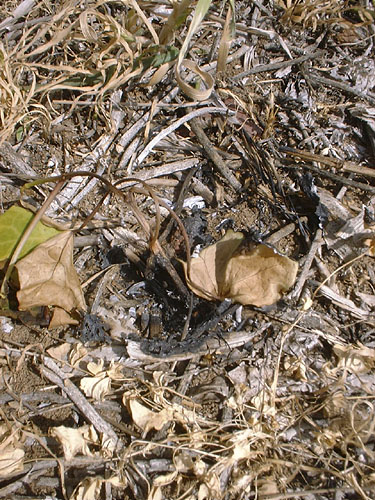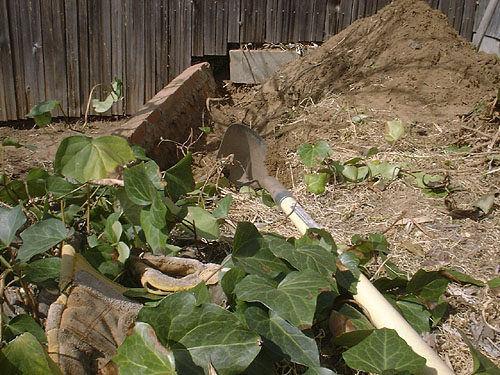After my last post I did more research on controlling English ivy. Beyond the commonly-quoted advice to spray with herbicides, or to attempt the mechanical removal that is occupying me these days, I saw an interesting idea for a new but as-yet-untested biological control Nothing immediately useful, unfortunately. And then I started to see techniques that could only be dreamed up by people like me who’ve been spending too much time fighting off Hedera helix.
From the folks at the University of California, in a discussion of ivy, comes:
Prescribed burning: An extreme method that has been used with some success is to burn ivy plants and resprouts with a blow torch at regular intervals; the energy used by the plant to regrow will eventually be depleted. Obviously, this approach requires considerable caution.
And from Organic Land Care.com comes:
Another more drastic method has been to use a blow-torch to repeatedly blast the plant with a hot flame. By repeatedly exposing the plant to high heat, this method is intended to exhaust the H. helix of its energy so that it is unable to multiply or produce berries for reproduction (Reichard, 2000).
So…fatigued of doing things the old-fashioned way, I went to the garage and got the blowtorch. After aiming the flame at some ivy leaves they began to writhe and smoke in a most satisfying way. Soon the leaves started to burn, which surprised me since ivy is one of the plants that shows up occasionally as a recommended plant for firescaping. As the leaves burned, some of the dead grasses around them started to catch fire. Just a little more heat and I’d have had a little brushfire started. Hmmmm. Maybe it’s not such a good idea, I started to think, looking up at a wood fence not more than two feet away. Damn, it felt good, but I ended the experiment right then and there–it probably wasn’t a good idea to burn down the neighborhood!


